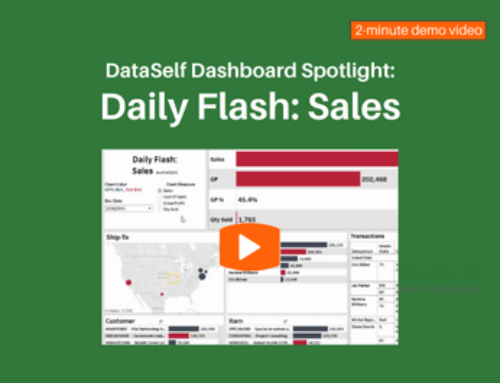 Everyone’s doing “data-driven marketing.” If you’re not already, you may have already kicked yourself. If you have begun, you’ve already seen how much work it is.
Everyone’s doing “data-driven marketing.” If you’re not already, you may have already kicked yourself. If you have begun, you’ve already seen how much work it is.
Like everyone else, you’re busy, and data-driven marketing can be all consuming — if you don’t do it right.
There’s a trick to it. You have to discover what Niklas Lohmann of HAAARTLAND technologies calls the “productive pattern”: an optimal combination of factors — type of content, frequency, channel, etc. — to resonate with your market.
There’s an expensive, painful method: Throw several hundred attempts against the wall and see what sticks. You throw blog posts in text or video, with some balance of brand building and broader support, podcasts, Linkedin or Twitter presence, and others. Sooner or later, you see patterns.
Lohmann shows his math to stop all that: Assume you try four types of messaging, such as thought-leading, brand building, even humor. Assume also five social channels, such as Linkedin and Twitter. Assume also six formats: video, short blog posts, etc. Four times five times six comes to 120 attempts. Throw in a few do-overs for extra credit, and you’ve got a headache.
Lohmann suggests a better way.
Tip #1: Simplify. Don’t even think about the 120 attempts. Start with just one type of content, one channel, a one format.
Tip #2: Find out where your best customers go for news and support. They are good leading indicators. What do they like and dislike? Let your own program emphasize characteristics your customers like and try to eliminate the ones they don’t.
Tip #3: Small bites. Don’t bite off a whitepaper — and the weeks of work that eats up. Do a few blog posts. Or make a podcast from an interview of a customer on Skype.
Tip #4: Watch how your results track with other parts of your business. For example, does customer satisfaction or sales seem to correlate?
Tip #5. Don’t compromise on data tools. Start with a spreadsheet if that’s what you use already. Soon, though, you’ll appreciate KPIs, dashboards, reports, and even data discovery.
Your data will grow into a hefty bank of knowledge let you go deeper and deeper, with ever more probing questions. What seems just powerful enough today looks like a weakling tomorrow. Sooner than you think, you’ll understand why growing SMBs deem data warehouses a must-have.
To get that data’s full value, you’ll need tools that are easy to use. Many tools do amazing things but seem to require a Ph.D to run them. If you can’t just dive in and analyze whenever you need to, with all the data you want to work with, you’ll end up not using it at all. Your program will suffer.
Go for a first-class data warehouse and best-in-class visualization tools such as DataSelf with Tableau.
This post was based on a post on Medium late last year by Niklas Lohmann, co-founder of HAAARTLAND technologies.




